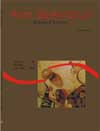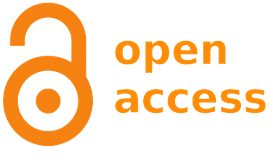O uso de técnicas para auxiliar a flexibilidade e equilíbrio em adolescentes portadores de paralisia cerebral: o relato de três casos
Resumo
Esta pesquisa teve por objetivo descrever os testes e o tratamento pediátrico de paralisia cerebral espástica em fase de independência motora para a flexibilidade dos membros inferiores e para o desenvolvimento do aumento no tempo de equilíbrio. Foram selecionados, para participar deste estudo, 3 sujeitos com paralisia cerebral em fase de independência motora. Sujeito 1 do sexo masculino, 12 anos, diplégico espástico; sujeito 2 do sexo masculino, 13 anos, hemiplegia direita espástica; sujeito 3 do sexo feminino, 10 anos, hemiplegia espástica esquerda. A metodologia usada para a avaliação foi o teste de “sentar e alcançar”, a goniometria e o teste de equilíbrio. O procedimento é composto em 16 semanas, com sessões individuais de 30 minutos, duas vezes por semana. Para conseguir flexibilidade dos membros inferiores, foi usado o método de facilitação neuromuscular proprioceptiva, e para estímulos proprioceptivos e vestibulares (equilíbrio) foram usados saltos no mini-trampolim. O resultado obtido com o tratamento proposto foi um ganho na flexibilidade, medido pelo teste de "sentar e alcançar" de 30% para o sujeito 1, 40% para o sujeito 2 e 40 % para o sujeito 3, e o ganho obtido com o tempo de equilíbrio foi de 160% para o sujeito 1, 100% para o sujeito 2 e 500% para o sujeito 3Downloads
DECLARAÇÃO DE ORIGINALIDADE E DIREITOS AUTORAIS
Declaro que o presente artigo é original, não tendo sido submetido à publicação em qualquer outro periódico nacional ou internacional, quer seja em parte ou em sua totalidade.
Os direitos autorais pertencem exclusivamente aos autores. Os direitos de licenciamento utilizados pelo periódico é a licença Creative Commons Attribution 4.0 (CC BY 4.0): são permitidos o compartilhamento (cópia e distribuição do material em qualqer meio ou formato) e adaptação (remix, transformação e criação de material a partir do conteúdo assim licenciado para quaisquer fins, inclusive comerciais.
Recomenda-se a leitura desse link para maiores informações sobre o tema: fornecimento de créditos e referências de forma correta, entre outros detalhes cruciais para uso adequado do material licenciado.












1.png)




3.png)













